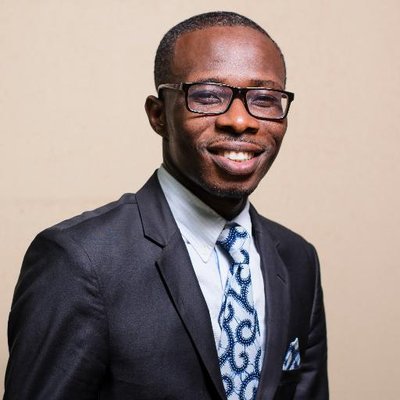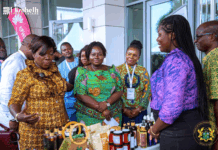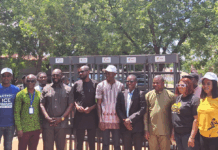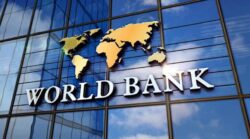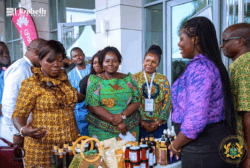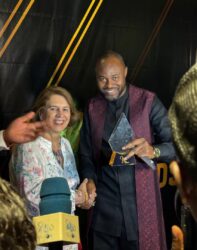By Bernard Kelvin CLIVE
“Passion alone is not enough. Your brand must meet a need, solve a problem, or serve someone.”
— Bernard Kelvin Clive
Let me tell you something many won’t admit: the brand you’re trying to build won’t come fully formed on day one. It won’t shine like those global names you’re admiring on Instagram. It won’t command five-figure deals or fill conference halls the moment you hit “post.”
The process often starts with uncertainty, a quiet idea, or a frustrated question like, “How do I even begin?”
That’s where I was over a decade ago—just a simple guy with a passion, a few books to my credit, and a desire to teach others what I was learning along the way. No fancy graphics – logos and all that stuff. No followers in the thousands. Just grit, generosity, and desire for growth.
What I discovered is this: branding, career, and passion only align when you permit yourself to be both a student and a guide. To show up flawed but faithful. To serve before you sell. To plant long before the harvest.to show up with love and lead, even uncharted paths.
This article isn’t a blueprint for overnight success. It’s my simple reminder that vulnerability, value, and vision can take you from “starting for free” to becoming a brand people trust—and pay for.
Career Growth and Transitions
We are in what I often call the “Me Era.” Everyone wants to show up as an expert. But what truly resonates today is vulnerability.
For example, instead of quickly transitioning into a new area and calling yourself an expert because you were in another field. Here is the right approach. When you openly admit, “This is a new field for you — and not yet an expert’. Let’s say you were an expert in HR, but I’m now transitioning into AI Technologies,” that honesty draws people in.
You invite your audience to journey with you. You say, “Come along with me. I’ll share my successes, my failures, and my learnings.” That openness builds trust. People begin to say, “Wow, this person is genuine — I can relate to that.”
Personally, about 16 years ago, when I started writing and publishing books, I began teaching others how to do the same. And one of the first things I did — “Layering,” as I call it — was create a simple pathway. I gathered a core group and began offering value for free.
No charge. No paywall. Just impact.
I would host free virtual sessions to teach them how to write and publish. From there, I received lots of frequently asked questions — which helped me refine my content. Eventually, I introduced low-entry paid versions of those sessions.
But by that time, I had already built trust. These people had seen my growth, been part of my learning journey, and now believed in the process.
So, what happened? They trusted me — because they saw where I started and where I was going. I didn’t hide my flaws. I was vulnerable. But I also showed that I was evolving. That’s what allows people to say, “Okay, this person can help me grow too.”
Free to Fee
Let’s talk about growth and your brand journey.
One of the challenges many young people face today is this: they want to see the money, but they don’t want to put in the effort. They want to look like the big brands or operate like the major players — but without doing the hard work that got them there.
That’s why starting for free can be a powerful lever. It first requires confidence in yourself. You need to test the waters with your skill, product, or service — and the easiest entry point is often offering it for free.
But that “free” isn’t just free — it’s you paying it forward. You’re preparing yourself and your offering ahead of time. It’s the entry price to becoming a strong brand. You gain feedback, experience, and momentum that you otherwise wouldn’t have if you just waited to get paid.
You also need to understand: that many expect instant success. But you’ll knock on some doors and get rejected. People will say, “Who is this girl? Where is he coming from?” They’ll compare you to existing brands. But if you keep showing up, learning, and improving, you’ll get to the point where people say, “Wow, we’ve seen them grow. This is impressive.”
If you use that free period to build your portfolio intentionally, that becomes your proof. Without that, you’re just doing things without substance. So yes, confidence matters — but so does consistency, and building your body of work. That’s what it takes.
Have a Clear Roadmap
It’s important to create a roadmap. Know where you’re going: what you want to learn, what skills to acquire, and how you plan to move from free to fee.
Even while offering things for free, you can begin to position value. For example, you can say, “This service normally costs X, but because you’re my first client, I’m offering it at this price.” That way, you’re not devaluing yourself — you’re framing your growth.
We need to educate people about this balance. If you just give things away without setting expectations, it becomes hard to later charge what you’re worth. So even in your free phase, define your goals, your worth, and your exit strategy from that stage.
Too often, people think success means launching and instantly booming. But there will be rejections. You’ll knock on doors and hear “no.” People will question who you are and what you’re doing. But if you stay consistent — keep showing up, keep learning — you’ll grow. People will take notice.
During that free period, you’re building something critical: your portfolio. Without that, you’re trying to prove value without proof.
Passion vs Market Needs
There is always the challenge of passions not paying and what the market needs. Let’s look at a simple framework that can help if you find yourself in that state.
Passion will be the fuel that will keep you through the low moments, to progress steadily until you reach the state of profitability. Progress might be painful, but if it’s purposeful, you can push through it. So, to begin with, it’s important to build a brand and career path around what you love to do.
That’s why loving what you do is so key. But you also need to find where what you love intersects with what the market needs. Because otherwise, you’re just obsessed with your passion alone.
You have to ask: How is what I love helping someone? Is it entertaining, solving a problem, or meeting a need? When you find that fit, it gives you the stamina to endure the tough nights — because you know your product is valuable.
That’s the money zone: when love meets a need. When your passion also serves others.
Actionable Steps for Moving From Free to Fee
Now that we’ve unpacked the layers, let’s bring it home. Building a meaningful brand, career, or creative path that lasts requires more than talent or good intentions—it involves motion. Here are five actionable steps to move from free to fee, without losing your essence:
- Define Your Learning Phase with Purpose
Don’t just do free work—document it. Capture the lessons. Gather testimonials. Let your learning season have structure, timelines, and reflection points.
- Clarify the Transition Point
Set a date or milestone when your offer will evolve. For example: “After my first 5 clients, I’ll introduce a starter pricing model.” Don’t stay in the free phase indefinitely.
- Build a Visible Portfolio
Whether it’s a personal website, a pinned tweet, a LinkedIn carousel, or even a WhatsApp status — let the world see your work. Your brand needs a footprint.
- Practice Value Framing
Even when offering something free, describe its real value. Say, “This service usually costs X, but you’re receiving it complimentary as part of my beta phase.” This sets expectations.
- Align Passion with Market Relevance
Keep asking: Who does this help? What problem am I solving? A passion that doesn’t serve may feel fulfilling, but a passion that meets a need becomes sustainable.
Your brand is not your logo. It’s not your tagline. It’s the sum of your consistency, character, and contribution. Start with what you have. Give value. Learn loudly. Then grow intentionally.
And remember: it’s okay to begin with free—but never forget where you’re going.
From free to fee — that’s your journey. Walk it boldly.
Remember, I’m your brand and publishing consultant.


